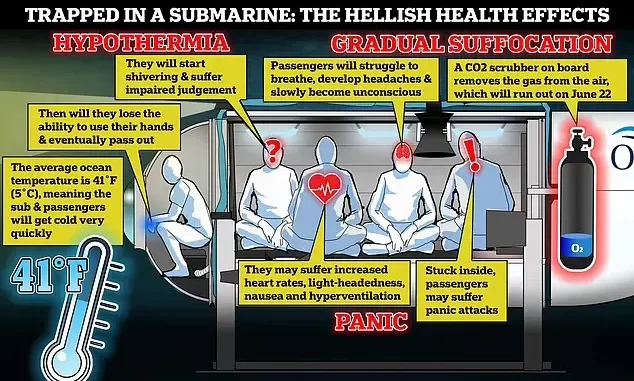
Rising carbon dioxide levels onboard the Titanic submersible may act as a sedative, sending the five trapped explorers to sleep,’ according to experts today.
Rescue teams are scouring the Atlantic Ocean in a race against time to locate the deep-sea Titan vessel, as oxygen levels are rapidly depleting.
Experts believe that electrical power has already been lost inside the 22-foot vessel. This means that vital scrubbers designed to filter out toxic CO2 levels in confined spaces may have already shut down.
-
As oxygen levels fall, so does the proportion of carbon dioxide exhaled.
Dr. Ken Ledez, a hyperbaric medicine specialist at Memorial University in St. John’s, Newfoundland, explained: ‘It becomes sedative; it becomes like an anesthetic gas, and you will go to sleep.’
CO2 poisoning is dangerous. When too much gas enters the bloodstream, it can cause asphyxiation or hypercapnia.
Experts believe that another risk presented to the Titan sub could help it survive long enough to be rescued.